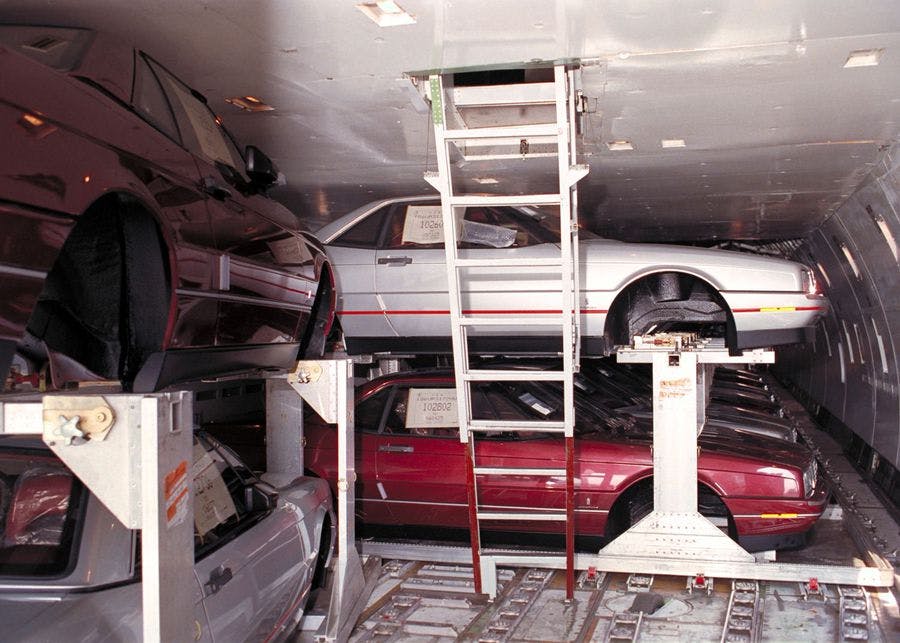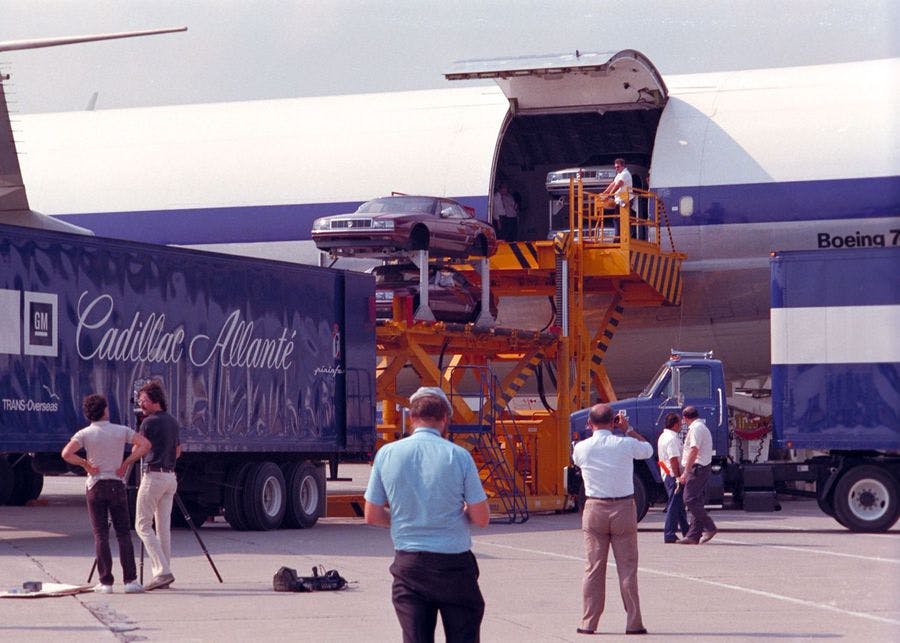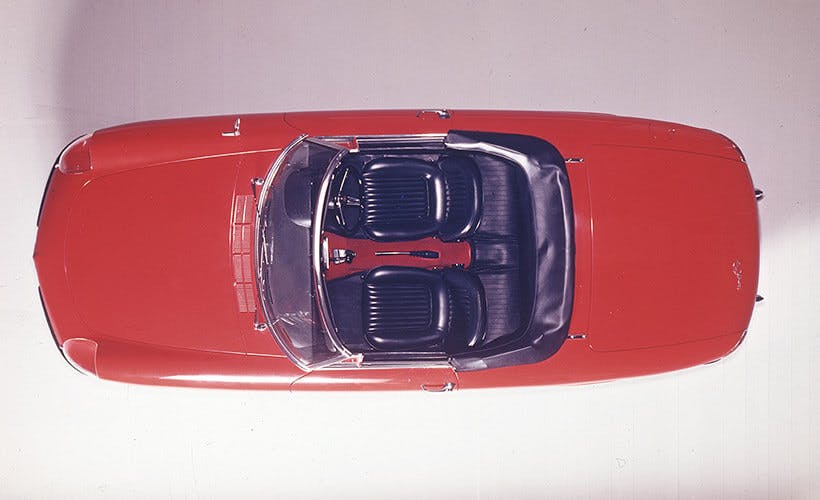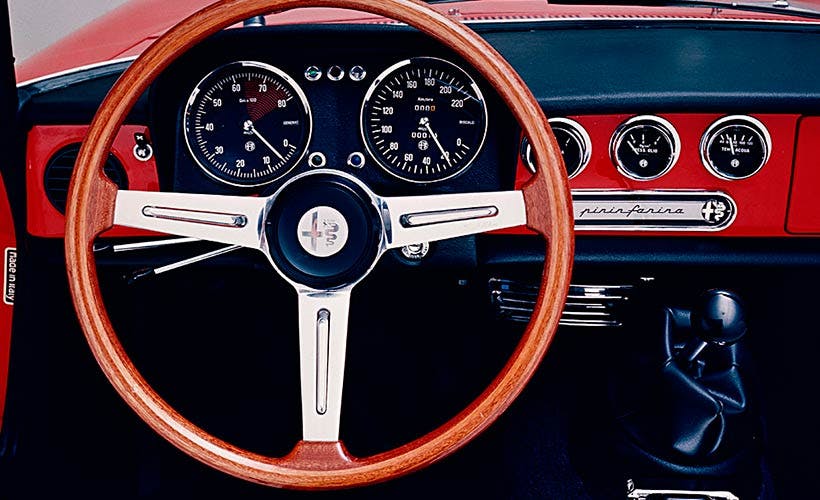How you too can afford the work of Ferrari’s greatest designers
At 92 years old, Carrozzeria Pininfarina has designed the dream cars of more than a few generations. It doesn’t matter if you love the Ferrari 250 GTO of the 1960s, the Ferrari F40 of the 1980s, or the Ferrari Enzo of just 20 years ago—each is the work of the Turinese firm founded by Giovanni Battista Farina. Tenth of eleven children, he was called “Pinin” by his family, and the nickname stuck. His company created many unattainable beauties, but also some special cars that almost anyone can afford.
Those machines are special for what they are and how they drive, but also for where they come from. In the 1920s and 1930s, if you were an Italian coachbuilder, Turin was where you wanted to be. Farina’s brother, Giovanni Carlo, set up his design business there in 1906. He would come to employ more than a few influential stylists. Felice Mario Boano, who drew the VW Karmann Ghia and the Lancia Aurelia, worked for him until 1930. Alfredo Vignale, later of the eponymous coachworks, started under Giovanni as well, as did Giovanni Michelotti, the man behind too many Ferraris, Triumphs, Lancias, and Maseratis to name.
Still, Pinin would take the surname the furthest. The younger Farina set out on his own, building bodies for Hispano-Suiza, Fiat, Rolls-Royce, and others. A partnership with Lancia helped his company become one of the first coachbuilders to master unibody construction. When World War II destroyed Pinin’s factory, he started over with a will. He rebuilt his facilities from scratch and set about growing into Turin’s premier coachbuilder.

The early days, or How to Get Into MOMA
The little Cisitalia 202 coupe is probably the single most important design in Pininfarina history. Its smooth and elegant lines evoke the 1950s, but the shape was born at the end of 1945. The 202 was the firm’s most famous work but hardly a commercial success—Cisitalia would go bankrupt less than 20 years later—but its design and quality workmanship established Pininfarina’s bona fides. To this day, a 1946 Cisitalia 202 GT lives in the permanent collection of New York’s Museum of Modern Art.

Even more of an upset was the 1946 Alfa-Romeo 6C 2500 roadster that Farina drove to the Paris Motor Show that year. Built on one of just six prewar Alfa Romeo chassis to survive the bombing of the Turin factory, the car’s streamlined body was stunningly avant-garde. What Farina did with it upset the French greatly.
Italian automakers were banned from the Paris show, but Farina turned up anyway. He parked the Alfa directly across from the show’s front doors, complete with a little Italian flag on the hood. Show organizers went nuts, but their fury was mere encouragement: The next day, Farina parked the car in front of the doors again. French newspapers and magazines ran angry comment, but the emotion just seemed to spur him on.
The Ferrari years: A delicate balance
In 1961, Pinin and his brother, Sergio, legally changed their surnames to Pininfarina. The move was telling; in a few short years, their company had become near shorthand for the best in Italian styling. Much of this was due to the Farina family relationship with Ferrari, which meant, of course, a relationship with Enzo Ferrari, the carmaker’s legendary founder.
As Sergio told it, the dance between Battista and Enzo was delicate. Here were two great men, but also two great egos. Would Mr. Farina come to Modena? He would not. Would Mr. Ferrari deign to visit Turin? Forget about it. The two men had first met at the 1950 Turin auto show, where they basically just stared at each other over lunch. There was a mutual respect, but neither wanted to be the first to reach out.
Sergio labored to solve this. In concert with a veteran Maserati racing driver working on behalf of Ferrari, he arranged a meeting. Farina and Ferrari came together at neutral ground, at a restaurant equidistant from the headquarters of each. An agreement was made. On the drive back to the office, Battista put Sergio in charge of the new partnership.

The first Pininfarina Ferrari was the elegant little 212, unveiled in 1951. The relationship that created it would continue through six decades and dozens of new Pininfarina-styled Ferraris, ending only in 2012. In that time, there were Pininfarina Ferraris of both heart-stopping elegance and forgettable shape, but every one of those machines carried a bit of Battista’s magic.
The standouts became watermarks, cultural touchpoints whose elegance and influence are still discussed today. In the 1960s, it was the 250 GT Lusso. Into the 1970s, there was the 365 GTB/4 Daytona. In the 1980s and 1990s, Pininfarina gave us the Testarossa and the F40.
But again, that age came to an end. The last Pininfarina-influenced Ferrari was the F12berlinetta, produced from 2012 to 2017. Behind the wheel, Ferraris are still as vicious as ever. But they are arguably no longer as pretty.

The Italian-American highlight reel
Let’s rewind a little. In the years immediately following World War II, many partnerships were formed between American carmakers and Italian coachbuilders. Ghia would come to have huge influence at Chrysler, for example. But America came knocking at Pininfarina’s door as well, and she did so more than once.
The first collaboration was with the oft-overlooked Nash-Kelvinator. In the mid-1950s, that company—the result of a merger between automotive firm Nash and appliance maker Kelvinator—would absorb the American carmaker Hudson to become the conglomerate known as American Motors Corporation, or AMC. Before that, however, it was simply a small and slightly wacky corporate tie-up whose product line included a car called the Rambler and a refrigerator dubbed Foodarama.
Pininfarina helped with a number of Nash designs, most notably the small and elegant Nash-Healey Roadster. Built from 1951 to 1954, these open-topped sporting machines beat the Corvette to market by a couple of years and are generally seen as the first postwar American sports car. Nash-Healeys were never built in America—assembly took place in either England or Italy, depending on model year—but they were a valiant effort in the field, competing at both Le Mans and the Mille Miglia.

Speaking of Corvettes, General Motors did commission from Pininfarina a one-off example of the model, built in 1963. The Chevrolet Corvette Rondine Concept is the work of American-born Tom Tjaarda, who worked for Pininfarina during the first half of the 1960s. (Among other Tjaarda efforts: the DeTomaso Pantera and the Ferrari 365 California.)
General Motors would again turn to Pininfarina for the two-seat 1987–1993 Cadillac Allanté convertible, one of the most accessible Pininfarina works. During production, those cars were famously flown between Turin and Detroit at ruinous expense. Like so many things Italian, that arrangement was a debacle at the time but later made a fantastic story.
The way in: Affordable Pininfarina classics
It might seem odd, to go from groundbreaking four-wheeled museum piece, to million-dollar Ferraris, to a 1990s Cadillac coupe. But that’s is the great thing about Pininfarina: A piece of the house is within reach of almost any enthusiast.
Take the MGB GT—a two-door, fixed-roof British sports car made from 1965 to 1980. Like the MGB roadster it was based upon, the GT was affordable when new and remains so today, but the coupe is weathertight and more elegant. You need to know your way around a wrench to keep any MGB on the road, but the GT’s classic looks are right up there with any expensive coupe of the 1960s. Solid driver examples can still be had for four figures.

For smaller pistons but just as much fun, try importing (or purchasing from an importer) a Honda Beat. This Japanese-market “kei” machine, built from 1991 to 1996, is a mid-engined, folding-roof sports and city car of just 656 cc. It offers a hummingbird’s thirst for fuel and was one of Pininfarina’s first properly mass-produced designs. Like any small Japanese car, a Beat is proof that engine size and entertainment don’t always go hand in hand. Solid examples already in America are priced about like a good used Honda Civic.
Want an Italian car from Italy’s best-known coachbuilder? You have a host of options. The 1966 Alfa Romeo Duetto Spider was Battista Farina’s last design work before changing his last name. The car was unveiled only a month before the great man’s death, but the Spider remained in production into the 1990s. Late examples are more comfortable and practical than early ones (the tradeoff is a bit more curb weight), and good runners can still be found for under $5000.
Last but not least, even more accessible fare came from Pininfarina’s partnership with Fiat. A 1969–1977 Fiat 130 coupe is not an easy car to track down, but it’s a visual sibling to the 1980s Ferrari 400. The 1966–1985 Fiat 124 Sport Spider offers true coachbuilt flair for the masses. Also freshly importable is the Fiat Coupé of 1993 to 2000; the visuals of that revolutionary front-drive wedge are an acquired taste, but the car is an excellent example of 1990s Italian futurism.
That, then, is the magic of Pininfarina—the firm’s stylists put just as much thought and heart into a Fiat coupe as they did a Ferrari Lusso. The exotics are beautiful, of course, and we love to see them on posters or at shows. But as the saying goes, great design is egalitarian. The dream of art, available for all.
Check out the Hagerty Media homepage so you don’t miss a single story, or better yet, bookmark it.







As far as affordable PF classics, you left out the first car to be not just designed, but entirely built by PF: the mid-engine Lancia Montecarlo (Europe) and Scorpion (US) sports cars. They had a couple innovative features for the time like a stowable roll-back canvas roof on spyder variants and a bonded-in windshield. Excellent examples aren’t much more than $20k.
Side note on the MGB, while you need to know your way around a wrench, parts availability is (darn near) 100% and pretty affordable. I’m sometimes surprised I can buy parts for my MGA cheaper than my Ford. I’m not sure if there’s a classic you can keep on the road for less money.
Agree 100%. Compare cost of a water pump, brake discs and a muffler for an MGB versus a late model Camry or Accord. MG parts are much cheaper.
Hullo Isaiah, I agree that the parts availability for the MGB GT is very good, but knowing your way around a wrench is surely something that is required if you enjoy the ownership of any “vintage” toy. My 1974 MGB GT has been a solidly reliable summer vehicle for the many years that I have owned it. For me it is one of the best looking cars produced (alongside my 1960 Elite).
Agreed, Richard. My ’74 MGB GT V8 RHD turns head visually, but wait ’til I open the bonnet and turn the key…
Not mentioned is the Rolls-Royce Camargue, 1975-1986, of which only 531 were built. The body was designed and built by Pininfarina on chassis supplied by Rolls-Royce, then shipped to England for final assembly. You can get one for something like $60,000 and up. Pininfarina also designed the final senior models for Nash and Hudson for 1955/56 when the two companies merged and before they became American Motors. Examples of those in good condition can be had for $12 to 15 thousand.
Much of my early driving experience was in my mother’s 1955 Nash. I was impressed by the Farina badge and the classic design and its easy driveability. IMHO the best looking Nash of the 1950s. Although that depends on the viewer. A classmate called it “the fat car” – not to be mean, just trying to describe it.
Can’t forget the 1959 and 1960 Cadillac Eldorado Broughams which if I remember correctly like the Allante were flown back and forth between Italy and the USA at great expense.
Have a ’84 alfa romeo spider veloce. Has the “pininfarina” emblem predominately displayed on side. Timeless, sporty design. Gets alot of attention and admiration at car shows and parking lots. 39 years of fun, affordability and dependability.
Never owned one, always admired them..
Don’t forget the 1970’s Fiat Spyder Convertible. Typically unreliable Fiat, but with Italian style!
The article did mention the Fiat Spider. The 124’s were dead-reliable. Not so much for the 850’s.
If my memory is still OK, I recall William Holden driving around in a Nash-Healey in the movie Sabrina. The sight and sound are wonderful. Try to find it.
PF’s contribution to the BGT stems from its roof line (and associated parts). British Leyland wanted a closed coupe for its then-new MGB and their internal attempts missed the mark. PF provided a proportion-changing solution. Previous alternatives used the carryover MGB windscreen, which left a shrunken view forward and an unhappy proportion. PF took over the brief and scrapped the windscreen, kicked it up by about and inch and half, raising the roof, adding airiness. The car’s window’s reflected (sorry) the need to be bigger, but were accommodated by a clever chromed finish on each door. Voila! Madames et monsieurs, the MGB GT!
Another Pininfarina Alfa you can get for not much coin in the US is the 91-95 164 sedan. Funnest fwd I’ve driven, and the V-6 busso will make you want to keep it on boil every time you drive it.
Pininfarina is peak Ferrari style. Lots of great cars have been penned by them.
I’m partial to my Pininfarina designed Ferrari 456M, which is not only elegant and beautiful, but one of the most affordable (in relative terms) Ferraris you can buy.
Agree on FIATs. Had an 850R coupe that buzzed you to death and a 124 Spyder that had a one-hand top. Need to remember to clean out the front oil slinger or pressure would go to pot. Is one of the few cars I would have again.
And then there is the Allante. Nice examples are under $10k. Problem is the foreign parts are what make it hard to maintain: a Bosch ABS when the rest of GM (including Cadillac) used a Teves. Worse the center stack with early LCDs that tend to bleed and totally undocumented. Believe it or don’t but it was not made by GM or Pinin but an uncredited Japanese company with many little white wires. Also the first years were under decree to avoid the gas guzzler tax (in a $50k car ?) and were slow. ’89 was much better but damage was done.
So can get great deals on Allantes, least troublesome are the 89-92 models, just know what to look for.
ps hardtops were origionally standard but by 90 was an option. Can tell by the VIN.
Trivia Q: What did Lois Lane of Superman-Squeeze fame drive in a couple of episodes?
Hint, it is pictured above, although in TV B&W, I’m not so sure about the color red.
maybe she drove one of these in a “couple episodes” but her main DD was a rail top ’53 Nash Rambler Convert.
I grew up riding around in a succession of cars of Pininfarina design that might not be easy to find nowadays but is pretty affordable: the Peugeot 504 (we mostly had station wagons, but there was one sedan).
Obviously brilliant, brilliant design legacy that surprisingly encompassed more than just autos.
Even though it’s not remotely in the “affordable” realm, I think you have to call-out the 206 Dino by name. The 206 not only launched Ferrari into the mid-engined road car game, but was the genesis for every mid-engine Ferrari to follow. The company’s design for Ferrari’s 308 GTS is arguably the most recognizable exotic in history thanks to its placement in popular film and TV productions during its run.
And a quick note about the 250 GTO: while Pininfarina may have been involved with the GTO’s development, what we know today as the GTO is thanks to Giotto Bizzarrini, Sergio Scaglietti, and the never-ending quest for faster lap times.
Google up a picture of a 1955 Nash Rambler Cross Country wagon. This little PininFarina design wagon was a one year only design as Nash Rambler merged with Hudson that year and in 1956 the Hudson designed boxier big wagon became the Rambler Wagon.
Probably one of the coolest wagons ever with a killer little 6 cylinder flat head that got 30 mpg with a bulletproof 3-speed automatic transmission. Unibody construction with a dropped roof luggage design at the rear make these cars truly unique. A Flying Naked Lady hood ornament and art deco styling to the dash complete the cool little lightweight wagon.
Ours is Coral Red (think Salmon colored) and affectionately named “Miss Piggy” has given us many years of smiles as we travel around to Southern California car shows. People are often shocked to see “PininFarina” on the B pillar.